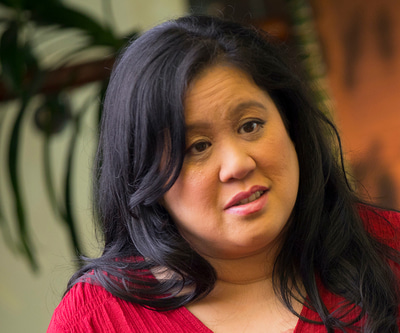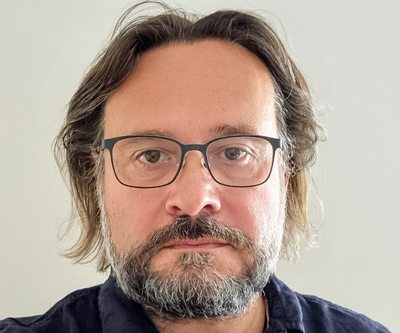- OT
- Professional support
- Optical organisations
- The ABC of CPD
The cover story
The ABC of CPD
What does the change from CET to CPD mean for the profession? OT outlines what the switch to continuing professional development will mean for how optometrists learn after qualification

20 October 2021
Picture a moment of hesitance in practice. Perhaps observing something you have never seen before in a scan. Or finding the right words to convey a difficult truth to a patient.
For Dr Teresa Chan, this is where healthcare professionals can find the epicentre of reflective learning.
“For me, it is the moments of discomfort where you feel that something didn’t go very well or you feel that it could have gone better – that is where you need to do some processing” she told OT.

Chan is associate dean of continuing professional development at the McMaster University Faculty of Health Sciences in Canada.
In July, she contributed to an article published in Academic Medicine titled What the COVID-19 Pandemic Can Teach Health Professionals About Continuing Professional Development.
Chan shared with OT that the COVID-19 pandemic has given everyone an opportunity to reassess the way that we live our lives.
“I think that in this big upheaval CPD is one of the many things that has to change, specifically within the health professions because we care for other people. If the pandemic has taught us anything, it is that we all sometimes have to up our game,” she emphasised.
“It might take a global pandemic for some of us to change but if all of us were constantly evolving it wouldn’t be such an uphill battle,” Chan added.
Within optometry, as well as widespread changes to the way that care is offered as a result of the pandemic, longer-term trends such as evolving technology, changing demographics and extended roles within primary care mean that the demands on optometrists have changed.
If the pandemic has taught us anything, it is that we all sometimes have to up our game
Taken in this context, the shift by the General Optical Council (GOC) to a more flexible approach to learning after qualification can be seen as an acknowledgement that as optometrists change the way they practise, they should also change the way they learn.
What does the shift from Continuing Education and Training to Continuing Professional Development mean on a practical level? OT details what is known about the new scheme below.
The changes explained
This year marks the swan song of continuing education and training. From 2022, a revamped scheme will see changes to post-qualification education requirements as well as a new name – continuing professional development (CPD).
In consultation documents on the changes, the GOC highlighted that CPD reflects the move away from a scheme that focuses on core competencies to one that fosters lifelong learning.
The regulator added that the name CPD is also consistent with the approach taken by other healthcare regulators.
The standards that underpin learning will also change, from standards of competence to standards of practice. The former faced criticism for being overly prescriptive, while the GOC believes the new standards will enable flexibility and cover a wider set of professional skills.
In terms of how the new scheme will work, optometrists and dispensing opticians will still be required to complete 36 points over a three-year cycle, including 18 interactive points.
CPD will be grouped in four different domains: professionalism, communication, clinical practice, and leadership and accountability.
Registrants will need to complete at least one piece of CPD from each of the four domains and can tailor their CPD based on their scope of practice.
Therapeutic optometrists will complete a further 18 points from an additional specialty domain. For contact lens opticians, 18 of their 36 points will need to be in the additional specialty domain.
When you are an elite performer in a certain domain, sometimes going outside of your own field to learn new techniques and skills from another discipline will be the nudge you need to realise what you were missing
Optometrists, therapeutic optometrists and contact lens opticians will continue to take at least one peer review per cycle.
There is an additional requirement for registrants to complete a mandatory reflective exercise with a peer but the details of how this will be implemented are not yet clear. As part of the new scheme, registrants will be able to take up to half of their CPD from sources that have not been approved by the GOC as long as it meets a series of criteria.
The non-approved CPD must have been developed for healthcare professionals and be at least an hour in length.
Registrants will also need to complete a short, written statement for each piece of non-approved learning to explain why it is relevant to their CPD.
CPD in a nutshell
- 36 points over a three-year cycle, including 18 interactive points
- Four domains: professionalism, communication, clinical practice and leadership and accountability
- Optometrists and dispensing opticians need to complete at least one piece of CPD in each domain
- Registrants undertake a reflective exercise with a peer in each cycle
- Non-approved CPD can count towards an individual’s points as long as it meets certain criteria
Why change?
Asked for her thoughts on what makes high-quality CPD, Chan observed that it is any learning that can help to change a healthcare professional’s practice for the better.
“If what we do is constantly changing, then we have to evolve with that,” she shared.
“We have to change the way that we interface with the world. What you learned in optometry school is not going to see you through your whole career,” Chan said.
She advised against embarking on a professional development journey alone, noting that reflection is seldom taught within undergraduate courses.
“It is an atrophied skill. If flipping towards a more reflective and tailored learning experience – don’t try to do it alone... If you want to change your practice, finding someone who can act as a mentor, coach, or even as a peer, is useful,” she added.
In September, the AOP launched a new mentoring programme for newly qualified members to receive additional support from more experienced members.
Within the new CPD scheme, there is flexibility for optometrists to study a wide range of subjects and incorporate non-approved CPD which may be completed alongside other healthcare disciplines.
Chan emphasised that healthcare professionals should not operate in silos. “If you are only focusing on the expertise of your specialty, then you are probably not comprehensively thinking about all the skills you need to be a great practitioner,” she said.
“There’s a reason why footballers sometimes learn to dance. There’s a reason why ballerinas sometimes take karate. When you are an elite performer in a certain domain, sometimes going outside of your own field to learn new techniques and skills from another discipline will be the nudge you need to realise what you were missing,” Chan elaborated.
Optometrist and Cardiff University academic, Marek Karas, is also an advocate of professionals stepping outside their comfort zone when it comes to CPD.
Last year, Karas and colleagues published Continuing professional development requirements for UK health professionals: a scoping review in BMJ Open.
“My research in this field has woken me up to realise that my behaviour is to do things that I want to do, not what I should be doing. Now I tend to go and do courses that I am less confident in,” he said.
Planned learning is a key aspect of CPD that differentiates it from CET. At the moment, medics are the only healthcare profession within the UK that use objective measures within this process.

When people can choose what they learn without objective input there can be a tendency to focus on areas that they are already knowledgeable about. "What you should be training in is what you are not good at. What you don’t know is what you should be focusing on, not what you know," Karas emphasised.
In their overview of CPD requirements for health professionals in the UK, Karas and colleagues note that of the nine statutory regulators for healthcare professions, the GOC is the only regulator to use the term CET rather than CPD.
They highlight that while CET instils the core skills needed for continuing practice, CPD has a broader ambition to develop the individual across their whole career.
“It asks the practitioner to reflect on their own practice, identify their own individual learning needs, plan to meet these needs, and then evaluate their learning while documenting this cycle in a personal development plan or portfolio,” the authors noted.
Before the introduction of the new CPD scheme, the GOC was the only UK healthcare regulator outside of medicine that accredits CET.
My research in this field has woken me up to realise that my behaviour is to do things that I want to do, not what I should be doing
From January next year, the GOC will audit a certain percentage of CPD providers each year rather than approving each piece of CET.
“The question remains open – is that a good thing or a bad thing?” Karas said.
Whether the new scheme supports high-quality CPD will be influenced by how the GOC manages different quality assurance processes, he added. Despite some remaining uncertainty on the scheme’s implementation, Karas emphasised his support for the GOC’s expansion into CPD.
“Moving to the new framework from standards of competency to standards of practice will mean a move from what we practise to how we practise. The advantage is that you allow the practitioner to evolve – and acknowledge this evolution because optometrists are already doing it,” he noted.
Karas added that enabling people to count learning from a non-approved provider towards their CPD also has strengths. “If you work in a hospital, you might want to go along to a training day with ophthalmology. At the moment, you can’t use that towards your CET,” he said.
Turning to research examining the effectiveness of CPD, Karas noted that there is limited evidence illustrating the impact of CPD on practice.
“In terms of modalities of CPD, there is not a huge evidence base for what is most effective at influencing practice. What has been shown is that peer-to-peer learning, interactive CPD and the use of personal development plans are more effective than traditional lecture or print-based CET,” he said.
Karas noted that the healthcare professions have moved on from early resistance to the idea of mandatory training.
“Earlier on in the process, people did not want to be compelled to do CPD. They said, ‘I am qualified, why should I be made to do it?’ That discussion is now over as it is mandatory for all UK health professionals. The next challenge is to get people to plan their learning,” he said.
The data
In 2018 the GOC conducted a consultation on continuing education and training titled, Fit for the Future: A lifelong Learning Review.
The consultation, which sought feedback on how the CET scheme could evolve to meet future challenges, received responses from 971 individuals and 21 organisations.
Asked for their views on the current scheme, most of those surveyed reported that CET helps to encourage professional development (73%), improve registrants’ practice (76%) and gives registrants the flexibility to undertake CET in relation to their individual scope of practice.
However, 58% of those surveyed thought that the current scheme risked optometrists and dispensing opticians losing skills and knowledge in some areas of practice, while opinion was split on whether the tools provided by the GOC to help registrants reflect on their practice were helpful (44% agreed and 44% disagreed).
A lack of clarity around the idea of reflection and its benefits was perceived to be the biggest barrier to registrants reflecting on their practice, with 63% highlighting this as a challenge.
Around three quarters of those surveyed (74%) agreed with the concept of giving dispensing opticians and optometrists more control over their learning and development.
Practitioner views: the value of CPD
For Inverness hospital optometrist, Stanley Keys, a key aspect of effective CPD is that it is clear and clinically relevant.
He welcomes the planned changes to CET, noting that a tailored approach recognises the different clinical demands that optometrists have.
“The changing of the name to CPD from CET is also useful as it brings our profession into line with other healthcare professionals and is therefore more relatable for our colleagues in other roles,” Keys said.
As an optometrist working in the Highlands, he delivers eye care to rural and often remote populations.
“Any educational initiative – whether it’s a formal qualification or ongoing continued education – is always beneficial, particularly in a region such as the Highlands and Islands, to help with delivery of essential eye care closer to our patient cohort,” Keys emphasised.
Continuing education is also valuable for Ian Morris – an optometrist who practises in Wick, 100 miles away from the nearest ophthalmology department.
“Even if you are covering old ground there is always a snippet of information that you can take from it,” he told OT.
Morris noted that while undertaking CPD in a remote area can be more challenging, he has close contact with the clinicians who deliver courses.
“You get to speak to the actual person that you may be sending someone to,” he observed.
There is also scope to tailor learning so it is focused on conditions that are more prevalent in the region, Morris added.
CPD is vital to make sure that you're keeping up with the latest developments, industry standards and trends
Southampton-based optometrist, Rebecca Rushton, noted that working as a locum can be isolating.
“Any sole practitioner can find themselves in an echo chamber if they don't regularly interact with other professionals or the broader optometric community. CPD is vital to make sure that you're keeping up with the latest developments, industry standards and trends,” she said.
She welcomed the concept of embedding reflective practice into learning.
“We should all be constantly improving ourselves, whatever our current level and scope of practice,” Rushton highlighted.
She is also looking forward to being able to count non-approved CPD towards her professional development.
“I work in refractive surgery, so it'll be great to be able to count time at refractive surgery conferences towards my CPD,” she said.
An evolving relationship
OT clinical editor and AOP head of education, Dr Ian Beasley, gives his take on changes to how optometrists learn after qualification
It would be a stretch to call it a love affair, but I guess after nine years we’ve kind of worked out how to rub along together. The deal? – if I tick an inordinate number of boxes to meet my continuing education and training (CET) requirements, then in return, the GOC retains my name on the rollcall so I can earn an honest crust. Fair exchange, no robbery.
But after almost a decade of marital harmony, the GOC has got itchy feet and the terms of our relationship are set to be redefined come January 2022. “It’s not you, it’s me,” they stressed.
It’s clear that the profession has moved on in recent years, driven by technology, higher qualifications and the devolution of healthcare. The GOC has recognised the need to change the way in which practitioners retain and develop their skillset, and so, the current CET scheme is being revamped and rebranded as continuing professional development (CPD) from next year.
During several candlelit webinars over the past year, the GOC has offered reassurance that much will stay the same. For instance, a quiet night in reading clinical articles in Optometry Today will still allow points to be accrued towards the minimum of 36 required over the three-year cycle. And, in keeping with the current scheme, at least half of the 36-point tally will need to be ‘interactive’, which can be achieved by attending virtual and in-person events. An expectation that points should be spread across the cycle also remains. With peer review set to continue on similar terms, at first glance, it’s hard to see what’s different about the new system.
The biggest overhaul will see a divorce from the competency-based approach. Instead, there will be four core domains and registrants will need to earn at least one CPD point in each of these over the course of the cycle. The new domains are far less prescriptive than the previous system and will allow practitioners to tailor their learning relative to their scope of practice. For example, an optometrist working exclusively in a glaucoma clinic will no longer be required to consolidate their knowledge in areas such as optical appliances or contact lenses if it’s not relevant to their role.
In addition to the four core domains, there will be a ‘specialty’ domain for contact lens opticians and therapeutic optometrists. For contact lens opticians, 18 of their 36 points need to be within this additional domain. Therapeutic optometrists will need to earn an additional 18 points in the specialty domain on top of their 36 general points.
Under the new scheme, the more liberal approach applied to registrants also extends to CPD providers, so practitioners may start to see innovative approaches to education filtering through over time. For instance, bite-sized pieces of content offering partial CPD points may well be on offer.
With this renewal of vows, the new scheme has the potential to deliver benefits to practitioners, the wider profession, and most importantly, our patients.
Advertisement


Comments (0)
You must be logged in to join the discussion. Log in